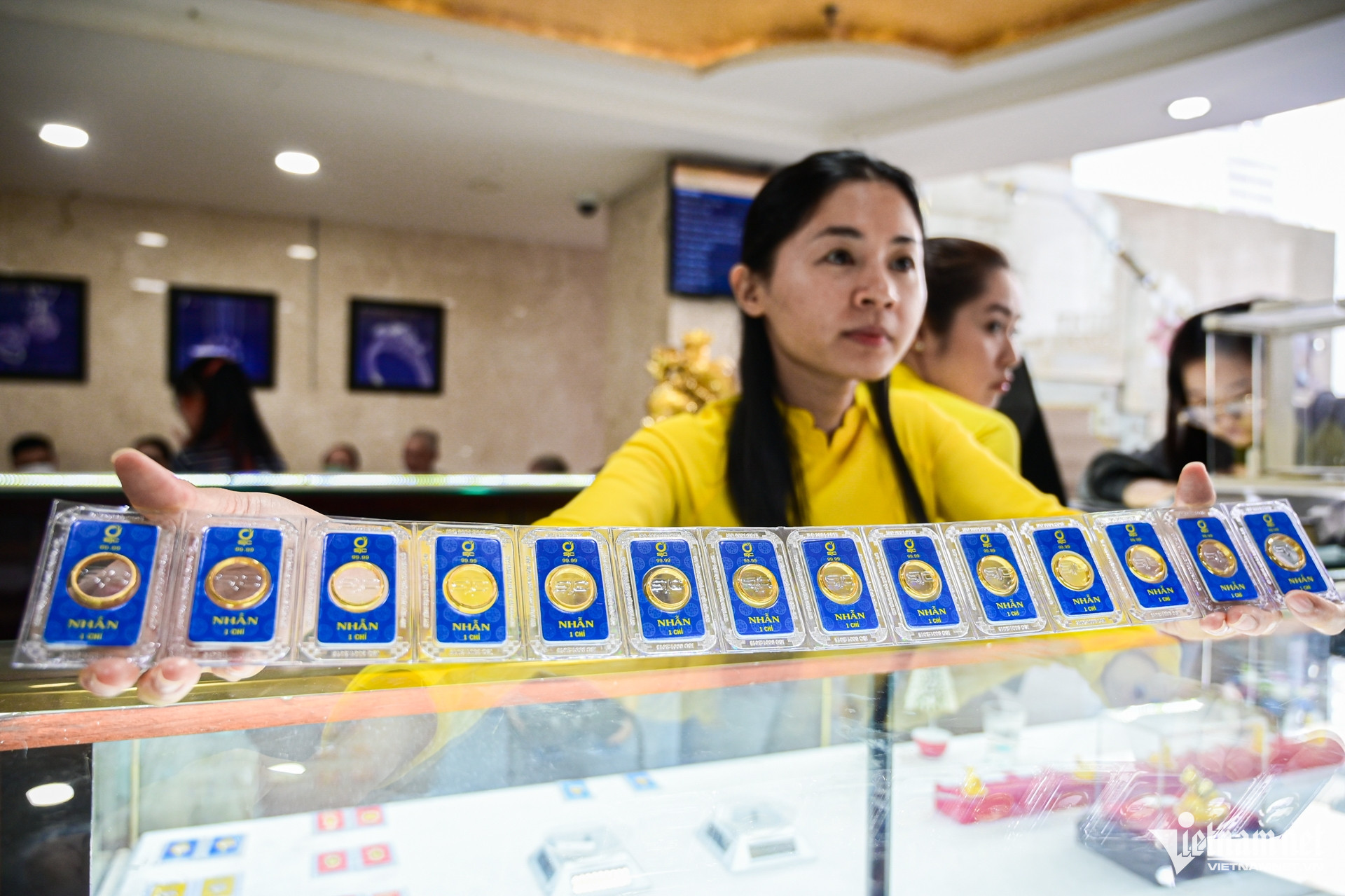
Global gold prices soared to a historic high of over $3,160 per ounce following U.S. President Donald Trump’s announcement of retaliatory tariffs on a wide range of countries. The dramatic increase reflects heightened investor anxiety amid global economic and political turbulence. Experts caution, however, that the market could reverse quickly as profit-taking pressure mounts.
Gold reflects investor flight to safety
Speaking with VietNamNet, Nguyen Quang Huy, Executive Director of the Faculty of Finance and Banking at Nguyen Trai University, said the surge in gold prices reflects investors’ defensive sentiment amid fears of prolonged trade tensions.
“One of the key factors driving this spike is the U.S. imposing retaliatory tariffs on numerous countries, raising concerns of a drawn-out trade war,” Huy explained.
“As global risks mount, gold continues to be seen as a safe-haven asset. The rush to buy has driven prices to unprecedented levels,” he added.
In Vietnam, gold prices tend to follow global movements. However, unlike free-floating markets, domestic gold prices are still regulated by the State Bank of Vietnam (SBV) to maintain macroeconomic stability and ensure monetary security.
As a result, domestic price increases may not match the pace of global gains. Investors are advised to closely monitor policy signals from Vietnamese regulators before making major investment decisions.
Call for a modern gold investment framework
Dinh Tuan Minh, Director of the Center for Market Solutions to Socioeconomic Issues, agreed that gold is a popular hedge against global economic shocks.
“While other nations may respond to the U.S. tariffs, their exact actions remain uncertain. This adds to market unpredictability, pushing investors toward gold,” Minh said.
He recommended that the Vietnamese government accelerate the development of a modern, globally connected gold certificate market, which would offer individuals and institutions a secure investment alternative to physical gold.
“Such a system could help stabilize the domestic gold market while offering investors a safer, more flexible vehicle for hedging risk,” Minh added.
Profit-taking may trigger corrections
Nguyen Quang Huy also noted that gold prices are currently at record highs, with the Relative Strength Index (RSI) exceeding 75 - a level that signals overbought conditions.
“This means the market could face strong profit-taking pressure at any time, potentially leading to a sharp correction,” he warned.
Huy urged investors to remain cautious and avoid being driven by FOMO (Fear of Missing Out).
“While gold may continue to climb, the risk of a sharp downturn is real. Investment decisions at this stage must be made with careful consideration, not emotion,” he said.
Diversification and long-term vision over short-term hype
While gold remains a key component of any investment portfolio, experts recommend limiting its share to no more than 10% of overall assets to manage risk.
Rather than chasing short-term market moves, Huy suggested that investors consider long-term investments in knowledge, health, and entrepreneurship in high-potential sectors like digital transformation, green innovation, technology, and creativity.
“These trends are more likely to generate sustainable long-term value, as opposed to short-term speculation on volatile assets like gold,” he concluded.
Nguyen Le